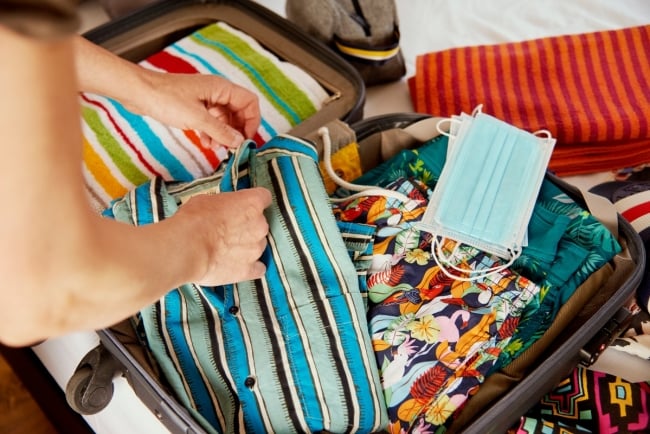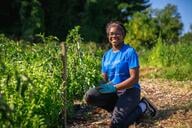You have /5 articles left.
Sign up for a free account or log in.

Spring break hot spots are already seeing a swarm of college students ready to party.
iStock/Getty Images Plus
Jess Riley, a senior at Boston University, packed her bags last week and traveled to London and Paris to celebrate spring break with her friends—something she wasn’t able to do last year because of the coronavirus pandemic.
Like many institutions, BU pushed back the start of its spring semester in 2021 and canceled spring break, hoping to minimize the spread of COVID-19.
Riley was thrilled to be able to travel again this spring after two years of the pandemic. She chose London because her friends had studied abroad there and were familiar with the city, and then they journeyed by train to Paris, where, she said, they had such a lovely time that they can’t wait to go back. Riley fully appreciates just how fortunate she is.
“I can’t even describe how amazing it feels to be back,” Riley said by phone from her hotel room in Paris. “Although the people of Ukraine are really on my mind, given that I’m much closer physically to where the war is happening, I feel incredibly lucky and grateful to be here.”
After nearly two years of restricted travel, students across the U.S. are hopping on planes to enjoy spring break in destinations all over the world. Riley said some of her BU peers traveled to Italy and the Dominican Republic and domestically to Florida and California.
“It seems like a huge year for travel,” Riley said. “Everyone seems to be so happy to be back to traveling.”
Spring break hot spots are already seeing a swarm of college students ready to party. NBC Miami reported in early March that Fort Lauderdale officials were expecting almost triple the number of college students this year compared to last year. Britain’s Daily Mail posted photos of big groups of young people gathered in swimsuits on Florida’s beaches.
Because many students will spend time in large crowds and potentially partying during their break, some experts are urging caution—especially for those traveling to COVID-19 hot spots. Anita Barkin, co-chair of the American College Health Association’s COVID-19 task force, said travel increases the risk of exposure to COVID-19, particularly since so many states have dropped mask mandates.
Florida, for one, has state laws against vaccine and mask mandates. Puerto Rico last week announced it will no longer require domestic travelers to provide proof of vaccination or take a COVID-19 test before arrival. California dropped its requirement for unvaccinated people to wear masks in most indoor settings starting in early March.
“Spring break represents a celebratory time,” Barkin said. “Students will be eating and drinking in places attended by students from different geographic locations that have different COVID-19 prevalence rates and different vaccination rates.”
Barkin recommends that colleges and universities require initial COVID-19 testing when students arrive back on campus, with repeat testing five days after their return. Institutions should also distribute information to students about symptoms of COVID-19, where to get tested and what to do if they develop symptoms, she said.
Some institutions have released COVID-19 protocols for students returning from spring break. Bridgewater State University is requiring all students who live on campus to submit a negative COVID-19 test within 72 hours of their return. Bowdoin College mandated that all students take a rapid antigen test no more than 12 hours before traveling back to campus. At the University of California, Santa Cruz, all students are expected to complete an at-home test 24 hours before returning to campus.
Naveen Vaidya, a mathematics and statistics professor at San Diego State University, has used mathematical modeling to determine the likelihood of COVID-19 case surges after spring break. He found that unless students take certain precautions, campuses could see a postbreak spike.
Vaidya co-authored a study released in February showing that one way to reduce such outbreaks is for institutions to schedule multiple shorter breaks instead of one long one. His modeling showed that dividing the nine-day spring break into smaller increments reduces COVID-19 cases. Splitting the break—into three shorter breaks, for instance, or a four-day break and a separate five-day break—reduced the possibility of a virus spike on campus between 2 percent and 37 percent. The figure depends on the number of students who travel, where they go, how they behave and how many people they come into contact with.
“The reduction is primarily due to the decrease in travel volume of students and choice of destination with low COVID-19 cases,” Vaidya said. “Many students do not travel if the breaks are of smaller duration.”
Vaidya recommends institutions offer incentives for students to avoid travel and send frequent emails reminding them to wear a mask, reduce contact with others and test frequently.
Barkin said in the coming weeks, institutions must continue to monitor disease prevalence on campus and in the surrounding community and should tailor their mitigation plans accordingly.
“Schools are adjusting their mitigation plans as the number of cases have fallen and as the CDC recommendations have changed to reflect this downward trend,” Barkin said. “Generally, student health professionals are experiencing some welcome relief. That said, some schools and geographic locations are experiencing outbreaks and higher case counts.”




